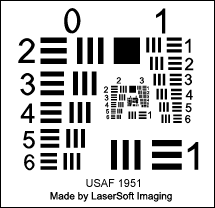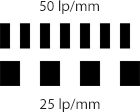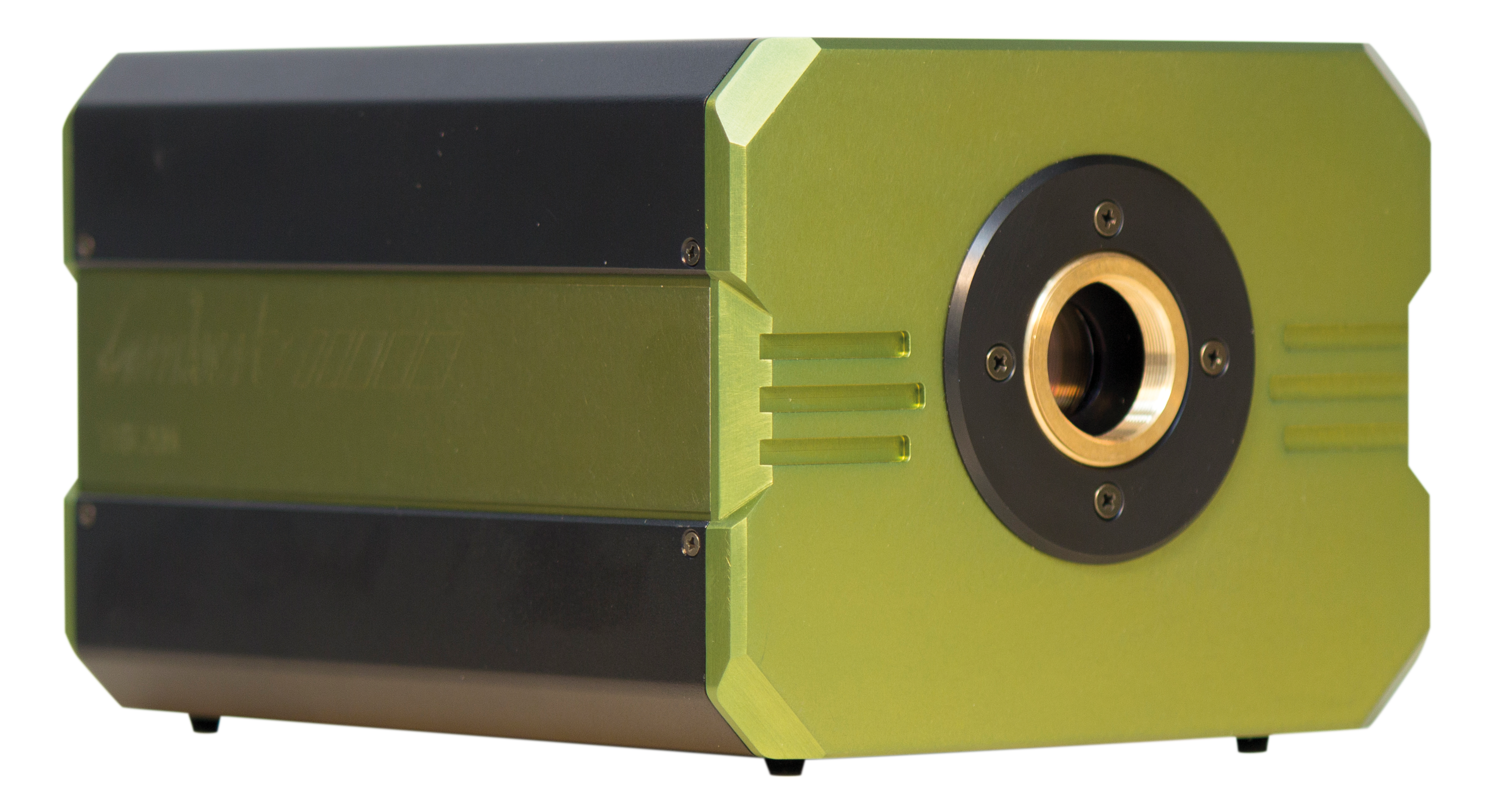< Back
Intensifier Control
Dual-Stage Image Intensifier
The limiting spatial resolution of an intensified imaging system depends on several factors, including (but not limited to)
-Image intensifier type
-Image intensifier gain
-Pixel size
Before we can discuss each of these factors, we need to define what limiting spatial resolution means. When characterizing an imaging system, the limiting spatial resolution describes the smallest features that can be distinguished. There are several ways of characterizing the spatial resolotion, most of them use a test chart like the USAF resolution test chart. Such charts have a series of lines on them, the smaller the lines an imaging system can distinguish, the better the spatial resolution.
Spatial resolution is quantified in the number of line pairs that can be distinguised per millimeter (lp/mm). A line pair consists of a dark line and a bright line. So if one line is 5 microns wide, then a line pair will be 10 microns wide and there would be 1 mm/10 microns = 100 line pairs per millimeter.
IMAGE INTENSIFIER TYPE
There is a wide range of image intensifiers available. We advise our customers on the type of intensifier they need for their application based on the wavelengths that are important for our customers, and the frame rates they need. High-speed intensifiers usually have a lower spatial resolution than image intensifiers that are optimized for lower frame rates.
IMAGE INTENSIFIER GAIN
We can increase the MCP voltage of an image intensifier to increase its gain. But MCP noise and the size of the electron cloud at the exit of the MCP also depend on the MCP voltage, so the spatial resolution will be slightly reduced as the MCP voltage is increased. You can learn more about how an image intensifier works on our image intensifier page.
PIXEL SIZE
Finally, the limiting spatial resolution of an imaging system is determined by the size of the pixels that collect the light from the image intensifier. You can use our intensifier-sensor matching calculator to find the theoretical maximum sensor resolution. It is calculated using the size of the pixels.
For example: If the pixels are 20 microns wide, we would need two adjacent pixels to distinguish a bright line and a dark line of a test chart. Those two pixels would have a total width of 40 microns, so the theoretical spatial resolution would be 1 mm/40 microns = 25 lp/mm.
The element of the imaging system with the lowest spatial resolution determines the limiting spatial resolution of the whole system. In our example, we have a sensor that has a limiting resolution of 25 lp/mm. If we have an image intensifier with a 50 lp/mm resolution, the size of the pixels would limit the resolution of the imaging system to 25 lp/mm.
However, if the pixels are smaller, 2 microns for instance, then the theoretical resolution of the sensor would be 250 lp/mm. In that case, the resolution of the image intensifier would determine the resolution of the total system.
OTHER FACTORS
Many factors influence the spatial resolution of an intensified imaging system, like the size of the image intensifier, the number of image intensifiers and the optics. If you would like more information about the right image intensifier for your application, please contact us.
Intensified Cameras and Attachments



HiCATT
The High-speed Intensified Camera Attachment (HiCATT) is designed for use with a high-speed camera. It increases the sensitivity of your camera and enables low-light imaging at frame rates up to 1 MHz (10 Mhz in burst)
View Product
HiCAM
The HiCAM is a gated intensified high-speed camera. It has an integrated fiber-optically coupled image intensifier, which offers a unique combination of high speed and sensitivity down to single photon level. Because the HiCAM does not need high intensity light sources, it is suitable for use in low-light level conditions.
View Product
TRiCAM
The TRiCAM is a compact intensified camera. It is designed for scientific and industrial applications that require low-light imaging. With built-in signal generators, the TRiCAM is capable of ultra-short exposures through fast gating and therefore suitable for time-resolved imaging.
View Product
TRiCATT
The TRiCATT is a compact lens-coupled image intensifier for scientific and industrial applications that require: – Low-light level imaging – Ultra-short exposures through fast gating – Frequency-domain imaging using lock-in detection Any camera with C-mount and a 1/2″, 2/3″, or 1″ image sensor is compatible with the TRiCATT. You can find the right TRiCATT for your camera with our interactive calculator.
View Product

